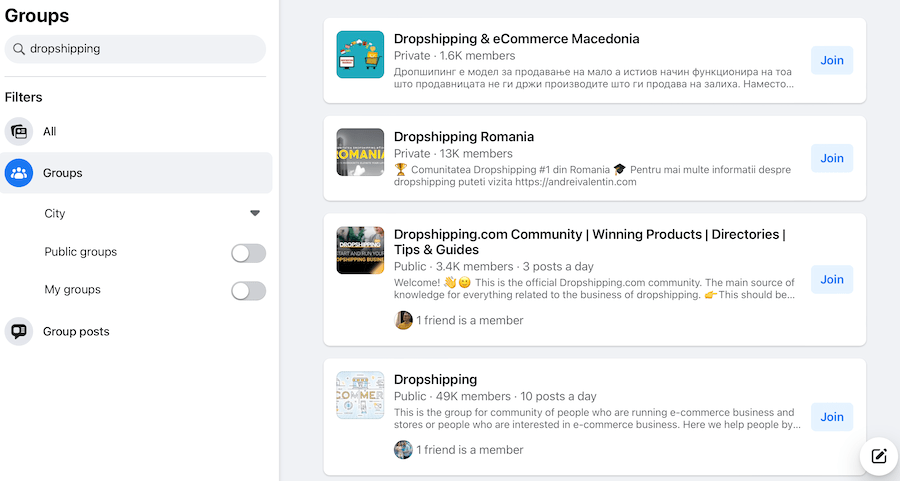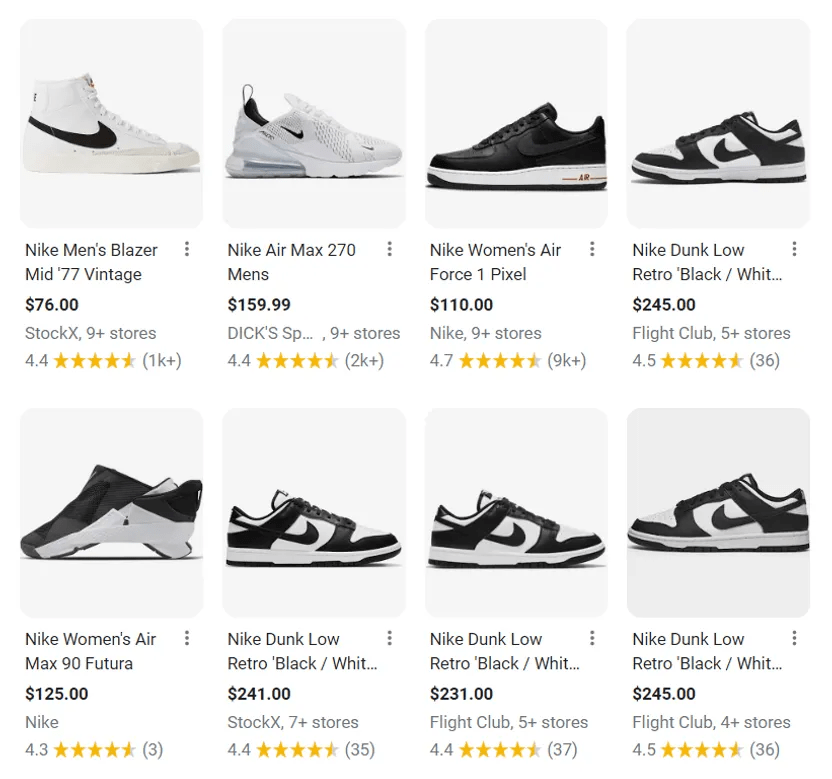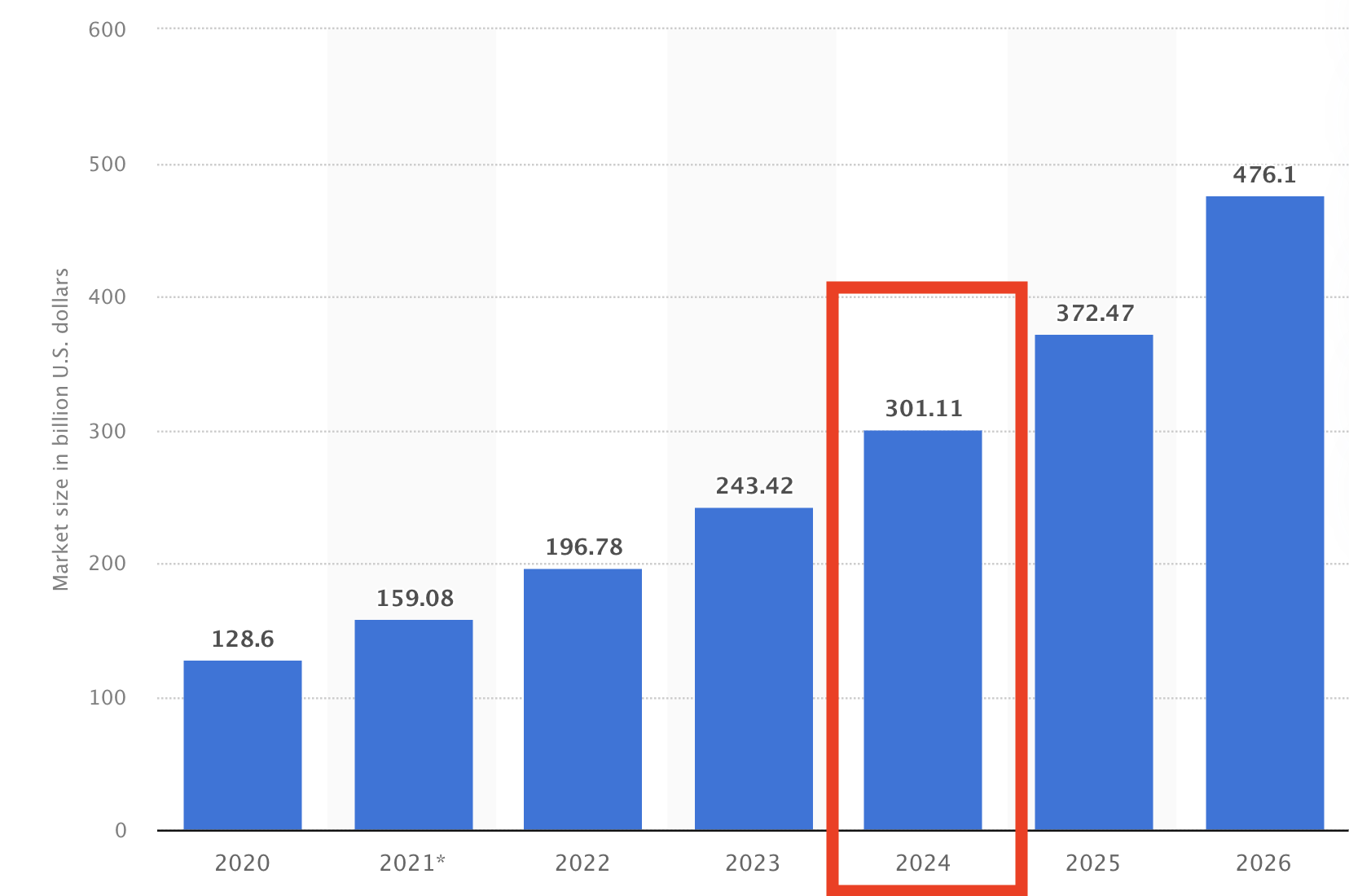What is Dropshipping and How to Start a Dropshipping Business?
In today’s digital era, online businesses have become the epitome of success and wealth.
With more and more entrepreneurs choosing to pursue this path, the relatively new eCommerce model, dropshipping, has been seen by many as an aspiring business idea that can result in great achievements.
But, what is dropshipping really? What tasks and operations does it involve? Is it profitable enough to help your business climb to the very top?
Before you jump on the bandwagon, let's break it down and take a look at each of the following questions separately:
- What is dropshipping?
- Is it worth it to dropship?
- How does dropshipping actually work?
- How do you dropship for beginners?
- What are the advantages of dropshipping?
- What are the disadvantages of dropshipping?
Without any delay, let’s jump into it immediately.
:format(webp)/https%3A%2F%2Fbrandsgateway.com%2Fapp%2Fuploads%2F2024%2F06%2Fbanner.jpg)
Looking for a reliable dropshipping or wholesale supplier?
Join us today for top-quality products and unbeatable prices.
What is dropshipping?
Dropshipping, also known under the acronym B2B2C (business-to-business-to-consumer), is a business method that allows you to sell merchandise online, without the need to set up and manage an inventory.
Your supplier is the one that runs a storage space where they stock all the products you’ll be selling to your customers, which they usually purchase from wholesalers or directly from the manufacturers themselves. Pretty intriguing, right?
Additionally, the supplier’s role in your dropshipping business doesn’t end here as they’re also responsible for shipping the purchased items to your customers.
Is it worth it to dropship?
Yes, dropshipping is worth it and is probably among the most fruitful eCommerce models out there.
Entrepreneurs are drawn to dropshipping for its low initial investment, the ease of store management, and the vast array of products that can be offered without the need for inventory.
With industry statistics showing an upward trend, this business approach is more than just a fleeting trend.
According to Statista, the global dropshipping market size is valued at a staggering $300 billion in 2024 and is projected to reach $476 billion by 2028.
These factors, combined with the expanding online shopping trend, make dropshipping a business model ripe with opportunities for those looking to carve out a niche in the eCommerce world.
What are the advantages of dropshipping?
The advantages that the dropshipping model brings are appealing to everyone who has the desire to try something new without having to invest much money, yet still earn significant profits.
No inventory costs
As previously stated, the dropshipping eCommerce method doesn’t require you to store your inventory, meaning you’ll be spending less from the very start.
That being the case, you can effectively rearrange your finances and put your money towards more productive things, such as investing in your advertisement plans like Facebook ads, Instagram ads, or Google Shopping ads.
Limitless flexibility
Dropshipping secures you the flexibility, which is often hard to attain with regular jobs, to work from anywhere in the world.
This being said, you can sell your products to customers across the world, while conveniently managing your store from your laptop in your home office.
No shipping involvement
The process of shipping takes up a lot of space and time logistically.
Nevertheless, with dropshipping, any operation related to packaging and delivery is sorted out by your dropshipping supplier.
Check out: Best dropshipping clothing suppliers
Reduced product shortage
Dropshipping significantly reduces the risk of experiencing product shortages.
With many suppliers, among which BrandsGateway, offering plugin solutions that connect your store with their storage, your online inventory will constantly be updated with new arrivals and stocked with already existing item collections.
Convenient product testing
Dropshipping is a great way of testing if something sells. You can experiment with different products and see which particular ones customers show the most interest in.
If the product doesn’t sell, you can always switch to another one without the loss of profit.
Smooth store running
As you can see, dropshipping takes off of your plate a lot of effort-consuming operations, enabling you to benefit from smooth store management.
With your supplier being responsible for inventory handling and delivery, you’re left plenty of time to focus on creating an alluring storefront, building a relationship with your customers, and developing strong marketing ideas and strategies.
Check out: Best ways to promote your online boutique
What are the disadvantages of dropshipping?
Aside from the advantages, as with any other business model, dropshipping also has a few drawbacks you should be aware of. On the bright side, despite being labeled as disadvantages, they are manageable.
So, let’s find out which are they and how you can overcome them.
Unreliable suppliers
The first drawback of dropshipping could be not choosing your supplier cautiously. Many online entrepreneurs who are racing to get into the dropshipping game by paying little attention tend to make this dropshipping mistake.
Solution:
When choosing a supplier, you need to put time into conducting exhaustive research to find someone you can rely on. This is the reason why you should avoid dropshipping with AliExpress and Chinese suppliers, and instead, choose a dropshipping supplier that is recognized in the industry.
For example, getting in touch with professionals from your niche is a guaranteed way you’ll come across trustworthy suppliers, like BrandsGateway, that offer you premium dropshipping services.
Dense competition
With thousands of online stores out there and hundreds of more opening every week, dropshipping is a highly competitive business.
But this shouldn’t be taken as a discouragement. There is an easy way to outperform competition and that’s being different and offering something unique that brings value to your customers.
Solution:
The best way to do this is by conducting a well-planned eCommerce competitor analysis and targeting niches that scream quality and authenticity such as dropshipping high-ticket products, for instance.
Check out: Best dropshipping clothing niches
Inventory management issues
The fact that you won’t have to manage your own inventory is a big plus in dropshipping.
However, this can also be the cause of difficulties like being unable to keep track of any type of product changes or receiving inaccurate inventory turnover calculations and reports.
Solution:
A solution to this problem would be choosing a supplier that offers automated dropshipping.
Instead of doing physical counts, these suppliers offer you precise automatic inventory updates, keeping you posted with all kinds of product alterations.
Shipping inconveniences
Similar to inventory difficulties, in dropshipping, shipping could also lead to a few inconveniences.
As you won’t be in charge of the product shipment, you also won’t be able to have control over the process.
In case of lost or damaged goods, it’s you that’ll be put on the line and not your supplier since it’s your name that stands on your store’s front.
Solution:
However, when teaming up with a well-reviewed supplier, there’s little chance for these things to happen.
Therefore, going back to one of our previous points, entering a partnership with a genuine supplier that’ll provide you with excellent services and no room for doubt, is the way to keep steer of this and many other unnecessary complications.
How does dropshipping actually work?
Now that you’re well aware of what dropshipping is, we can go further into explaining the process of dropshipping from start to finish in order for you to fathom the fundamentals of this model.
To provide you with a more practical and illustrative description, we’ll use an example of a fictional online boutique for luxury clothing supplied by BrandsGateway and dissect the process into four courses of action to explain how to start a dropshipping clothing business:
- Receiving an order in your store;
- Placing the order with the supplier;
- Shipping the order to the customer.
Step 1: A customer places an order
You’ve opted for BrandsGateway’s dropshipping services and have created a store by using Shopify or by availing yourself of Shopify alternatives such as Wix, BigCommerce, WooCommerce, or Shift4Shop, for all of which BrandsGateway happens to offer automated integrations.
A customer visits your website and buys a Gucci dress. The minute they purchase the item, the order has been successfully placed.
Step 2: The supplier received the order
The order is forwarded to BrandsGateway automatically.
At this point, you’re charged the wholesale price of the product mentioned above, and can easily calculate your profit margins as well as differentiate between margin and markup.
Step 3: The product is shipped
After the payment has been completed, the supplier ships the order to your customer.
The product is delivered without you having to get involved in the process.
How do you dropship for beginners?
How do you dropship as a beginner? – a question that lingers in everybody’s minds. Luckily, we’re here to give you the answer you’re looking for.
When deciding to embark on your dropshipping journey for the very first time, it’s important to execute things in a certain order so that you can have a seamless experience.
This is our suggestion on how your approach should look like:
STEP 1: Pick a niche for your online store
Choosing your niche is probably the trickiest part of the dropshipping process.
However, this isn’t a reason to get disheartened about it. There are plenty of ways to help you pick the ideal niche for your business.
The following dropshipping tips can be extremely beneficial in your search for the right products to sell:
- Carry out thorough research about dropshipping trending products and niches by using a number of tools such as Google Trends.
- Investigate your potential competitors, find out what they’re selling, and if their products are bringing them significant profits.
- Discover the customers’ needs and try to go with products that never go out of style such as high-end fashion items, for example.
- Consider profitability as a major defining factor as some markets can be more lucrative than others. That being said, the luxury goods market is considered to be among the top earning segments with over 300 billion USD generated in 2023.
STEP 2: Find a dropshipping supplier
To excel in the dropshipping industry, it’s advisable to collaborate with a supplier who’ll deliver top-notch services.
Here’s how to come across them:
- Broaden your network. Participate in dropshipping conferences and similar events, where you’ll have the opportunity to get in touch with some of the industry’s giants.
- Search online. Give the good-old browser search a try.
- Listen to podcasts. Tune in for business and eCommerce podcasts.
- Connect with experienced dropshippers. Talk with fellow eCommerce entrepreneurs and see if you can extract some information.
- Research on social media. Join social media groups and forums dedicated to dropshipping such as these dropshipping Facebook groups.

Now, let’s assume you’ve found a few decent candidates and have been going back and forth about which one to choose. To easily lower the selection, stick to these requirements:
- Product quality. People don’t appreciate receiving a product that looks nothing like the picture displayed in your online store. To avoid losing customers, opt for a supplier that provides product authenticity and has proven product quality.
- Refund policy. A refund policy is something you mustn’t ignore when starting a dropshipping business as you might experience situations where a customer asks for a refund in the case of damaged goods, for instance. In dropshipping, the one responsible for returns is your supplier, therefore when looking for a legitimate supplier make sure it offers at least a 14-day return policy.
- Delivery times and locations. Even though your hands are tied when it comes to shipping, as your supplier is responsible for that stage of the process, you’ll still have to take responsibility in case of delayed or limited delivery. So, carefully inspect your supplier’s shipping schedule in order to avoid long delivery times and ensure you get a dropshipping supplier with worldwide shipping.
- Inventory organization. Lastly, ensure your supplier will generate your SKU and UPC codes. These won’t only allow you to supervise your storage at all times but also enable customers to quickly identify any of your store’s items while they shop.
STEP 3: Launch your online store
With your website representing your shop’s storefront and the place where most operations will be performed, make sure to give 100% of your attention to building your store. If you’re looking to create a dropshipping website, it’s crucial to choose a platform that supports seamless product sourcing and order fulfillment.
Platforms such as Shopify and the few others we’ve mentioned above will assist you in arranging your website quickly and easily by:
- Supplying you with a store design including themes and a variety of page types (homepage, product page, About Us page, FAQ page, etc.).
- Offering you the option to insert products in the store.
- Setting up your payment methods.
- Allowing you to take advantage of additional features and add-ons such as these best WooCommerce plugins, Wix plugins, and Shopify dropshipping apps.
- Provide you with a domain name.

STEP 4: Come up with an advertising plan
Finally, it’s time to learn how to advertise and get your dropshipping store out there. Here’s how to do that:
- Through organic traffic by improving your SEO.
- Via paid social media marketing such as YouTube ads, Facebook ads, Google ads, Instagram ads, etc.
- By means of starting eCommerce affiliate programs.
- By running a blog, vlog, or eCommerce podcast.
- By consulting with a marketing agency.

Long story short
Dropshipping is an order fulfillment eCommerce method that allows entrepreneurs to put their selling abilities to the test and build a strong business.
Having provided you with in-depth explanations, identified the advantages and disadvantages, evaluated the model’s profitability, and given you the necessary steps to lead you toward a successful business, you are now prepared to open your online store.
Don’t be afraid to take a risk as the dropshipping industry is only getting better.
Continue reading
FAQ
-
-
Dropshipping is profitable in 2024 and will continue to be in the years to come. Numerous numbers and data speak about the potential that dropshipping holds. Research conducted by Grand View Research, Inc. anticipates that the global dropshipping market will grow exponentially and will reach $557.9 billion by 2025.
-
-
Yes, dropshipping is a legal business model offering convenient running of your online store and supplying you with great work flexibility.
-
-
Dropshipping is a low-cost business, meaning you don’t need a lot of money to get your online store off the ground. Since with dropshipping your supplier takes care of the products, you won’t have to deal with inventory costs. Moreover, because you can choose the web-building platform and marketing channels you prefer, you can easily control how much you’d like to spend and easily stick to your budget.
-
-
Yes, dropshipping can certainly be a side hustle that can allow you to earn dropshipping passive income as the business model offers great flexibility in running it.
-
-
It’s fairly possible to make a full income with dropshipping, and numerous owners of dropshipping stores are proving it. An example of a success story with a dropshipping business is a couple from Eastern Europe that makes 10,000€ monthly by selling clothes with BrandsGateway. Another example is an online entrepreneur who by dropshipping clothing earns over $44.000 per month. Therefore, you can definitely make over $10,000 a month with dropshipping, if you develop a good business plan and choose the right supplier.
-
-
Yes, dropshipping is allowed on eBay. eBay dropshipping allows entrepreneurs to list items by paying an insertion fee and a final value fee, both of which can vary depending on the type of product.
-
-
Yes, dropshipping is allowed on Amazon. Their policy requires dropshippers to choose a subscription plan depending on how many items they’re intending to sell per month. After they’ve purchased a package, dropshippers can begin creating product listings and start their Amazon dropshipping journey.
Related articles
Our clients' success stories speak volumes about the impact BrandsGateway has had on their businesses.
View More Articles








:format(webp)/https%3A%2F%2Fbrandsgateway.com%2Fapp%2Fuploads%2F2024%2F07%2FScreenshot_20240618_140550_Gallery.jpg)

:format(webp)/https%3A%2F%2Fbrandsgateway.com%2Fapp%2Fuploads%2F2025%2F03%2Fniche-store-scaled.jpg)
:format(webp)/https%3A%2F%2Fbrandsgateway.com%2Fapp%2Fuploads%2F2025%2F02%2FChoosing-shopify-pricing-plan-scaled.jpg)
:format(webp)/https%3A%2F%2Fprod-brandsgateway-images.s3.fr-par.scw.cloud%2F2021%2F05%2Fwomens-clothing-1-aa0164ad-aaa.jpg)
:format(webp)/https%3A%2F%2Fprod-brandsgateway-images.s3.fr-par.scw.cloud%2F2022%2F03%2Fdropshipping-clothing-business-e3e613b8-0b1.jpg)
:format(webp)/https%3A%2F%2Fprod-img.s3.fr-par.scw.cloud%2F2024%2F04%2Febay-selling-b0c8a8d2-e59.png)
:format(webp)/https%3A%2F%2Fbrandsgateway.com%2Fapp%2Fuploads%2F2024%2F12%2Fsweden-dropshipping.png)
:format(webp)/https%3A%2F%2Fbrandsgateway.com%2Fapp%2Fuploads%2F2024%2F12%2Fvendor-brands.png)
:format(webp)/https%3A%2F%2Fbrandsgateway.com%2Fapp%2Fuploads%2F2024%2F11%2Fshopify-website-design.png)